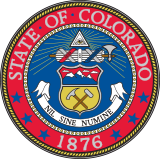Food for Home Consumption & Retirement Communities Exemptions
Report No. 2021-TE11

Second Regular Session | 74th General Assembly
Colorado General AssemblyReport No. 2021-TE11
Report No. 2021-TE12
Report No. 2021-TE13
This memorandum provides information on how revenue changes in legislative measures may impact the state’s flexibility in using its $3.8 billion allocation of federal American Rescue Plan Act (ARPA) funds. This memorandum will be updated as additional federal guidance becomes available and...
Focus Colorado presents forecasts for the economy and state government revenue through FY 2020-21. Implications of the forecast for the state's General Fund budget and spending limit are described in the report's highlights and executive summary sections. The report is based on current law,...
Report No. 2021-TE14
Report No. 2021-TE15
Report No. 2021-TE16
Report No. 2021-TE17
Report No. 2021-TE18
Report No. 2021-TE19
Report No. 2021-TE20
Report No. 2021-TE21
Report No. 2021-TE22
Report No. 2021-TE23
The Appropriations Report summarizes the final action of the General Assembly and the Governor on the budget and other legislation passed during the previous legislative session that contained an appropriation of moneys.
Report No. 2021-TE24
Report No. 2021-TE25
Report No. 2021-TE26
Report No. 2021-TE
The Sales and Use Tax Simplification Task Force (task force) was originally created in 2017 pursuant to House Bill 17-1216. In its original form, the task force was scheduled to be repealed in 2020. However,...
Summary report for the Legislative Oversight Committee Concerning Tax Policy & Task Force.
Pursuant to Section 2-3-1602, C.R.S., the committee is charged with reviewing and proposing legislation or other policy changes related to wildfire prevention, mitigation, and related matters, including public safety and forest health issues.
Summary report for the Water Resources Review Committee.
This memorandum provides information on state tax expenditures for renewable energy resources. State tax expenditures include individual and corporate income tax credits, deductions, and exemptions, and sales and use tax exemptions. Renewable energy resources include solar, wind, geothermal,...